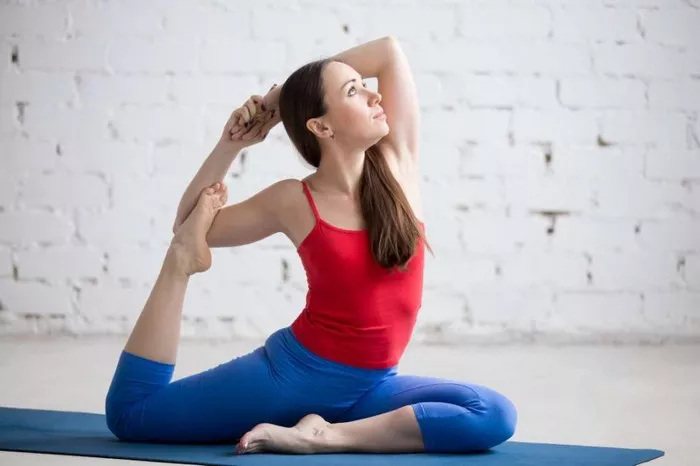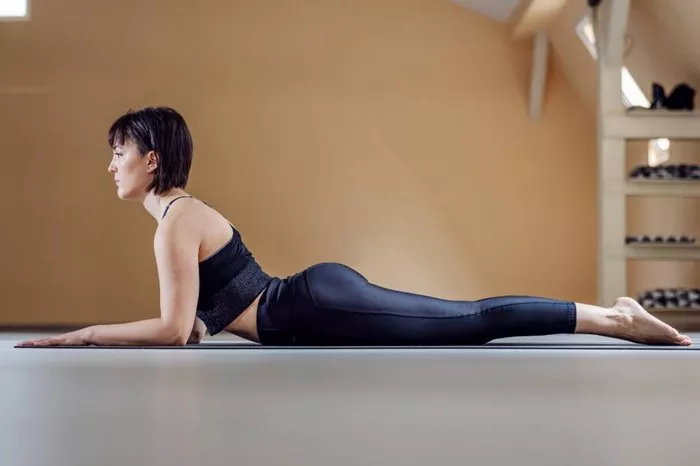Iyengar Yoga, developed by B.K.S. Iyengar, is a distinct and transformative practice within the broader spectrum of yoga. Known for its meticulous attention to alignment, the use of props, and the emphasis on the therapeutic benefits of yoga, Iyengar Yoga stands out as a deeply enriching and accessible practice for practitioners of all levels. This article delves into the fundamental principles that set Iyengar Yoga apart, exploring its history, methodology, and the profound impact it can have on both the body and mind.
A Brief History of Iyengar Yoga
Iyengar Yoga traces its roots to the teachings of Bellur Krishnamachar Sundararaja Iyengar, commonly known as B.K.S. Iyengar. Born in 1918 in Karnataka, India, Iyengar faced numerous health challenges in his early years, including tuberculosis, typhoid fever, and malaria. These struggles led him to yoga, which he began practicing under the guidance of his brother-in-law, the renowned yoga teacher T. Krishnamacharya. Through dedicated practice and exploration, Iyengar developed a deep understanding of yoga’s potential to heal and transform.
In 1966, Iyengar published “Light on Yoga,” a seminal text that has since become a classic in the field of yoga. This book, along with his other works and international teaching tours, helped to establish Iyengar Yoga as a distinct style, characterized by its focus on precision and alignment.
Core Principles of Iyengar Yoga
Precision and Alignment
One of the hallmarks of Iyengar Yoga is its unwavering commitment to precision and alignment in each pose. Practitioners are encouraged to pay meticulous attention to the placement of their bodies, ensuring that every joint, muscle, and bone is correctly aligned. This focus on alignment not only enhances the effectiveness of each pose but also helps prevent injury and promote long-term structural integrity.
Use of Props
Iyengar Yoga is renowned for its innovative use of props, such as blocks, straps, bolsters, and chairs. These tools are not merely accessories but integral components of the practice. Props allow practitioners to achieve the correct alignment and maintain poses for longer periods, regardless of their level of flexibility or strength. This inclusive approach makes Iyengar Yoga accessible to people of all ages, abilities, and physical conditions.
Sequencing
In Iyengar Yoga, the sequencing of poses is given paramount importance. Sequences are thoughtfully designed to prepare the body and mind for deeper work, gradually progressing from simpler to more complex poses. This systematic approach ensures that each class builds upon the previous one, fostering a sense of progression and mastery over time.
Therapeutic Applications
Iyengar Yoga is widely recognized for its therapeutic benefits. B.K.S. Iyengar himself experienced profound healing through yoga, and his method emphasizes the use of yoga as a tool for addressing specific health issues. By incorporating props and modifying poses, Iyengar Yoga can be tailored to meet the needs of individuals with various conditions, including back pain, arthritis, and stress-related disorders.
The Practice of Iyengar Yoga
Asana (Postures)
Asana practice in Iyengar Yoga is characterized by its attention to detail and methodical approach. Each pose is broken down into its component parts, with precise instructions on how to enter, hold, and exit the posture. Commonly practiced poses in Iyengar Yoga include standing poses, inversions, backbends, forward bends, and twists.
Standing Poses
Standing poses form the foundation of Iyengar Yoga. They build strength, stability, and awareness in the legs and feet while cultivating balance and coordination. Examples include Trikonasana (Triangle Pose), Virabhadrasana I (Warrior I), and Tadasana (Mountain Pose).
Inversions
Inversions, such as Sirsasana (Headstand) and Sarvangasana (Shoulder Stand), are integral to Iyengar Yoga. These poses are believed to have numerous benefits, including improved circulation, enhanced mental clarity, and a sense of calm.
Backbends
Backbends in Iyengar Yoga are approached with great care to ensure proper alignment and support. They help to open the chest, strengthen the back muscles, and increase spinal flexibility. Common backbends include Urdhva Mukha Svanasana (Upward-Facing Dog Pose) and Ustrasana (Camel Pose).
Forward Bends
Forward bends are used to calm the mind and stretch the hamstrings and lower back. They are often practiced with props to maintain proper alignment and avoid strain. Examples include Paschimottanasana (Seated Forward Bend) and Uttanasana (Standing Forward Bend).
Twists
Twists are employed to improve spinal mobility, detoxify the organs, and enhance digestion. Poses such as Ardha Matsyendrasana (Half Lord of the Fishes Pose) and Marichyasana (Marichi’s Pose) are commonly practiced.
Pranayama (Breath Control)
Pranayama, the practice of breath control, is an essential component of Iyengar Yoga. Iyengar emphasized the importance of mastering asana before delving deeply into pranayama, as a stable and aligned body provides the foundation for effective breath work. Pranayama techniques, such as Ujjayi (Victorious Breath) and Nadi Shodhana (Alternate Nostril Breathing), are taught with the same precision as asanas, fostering greater awareness and control of the breath.
Meditation and Philosophy
While Iyengar Yoga is often associated with its physical practices, it also encompasses meditation and philosophical teachings. B.K.S. Iyengar’s approach to yoga is rooted in the classical eight-limbed path of Patanjali’s Yoga Sutras, which includes ethical principles (yamas and niyamas), posture (asana), breath control (pranayama), sensory withdrawal (pratyahara), concentration (dharana), meditation (dhyana), and ultimately, liberation (samadhi).
The Role of the Teacher
In Iyengar Yoga, the role of the teacher is pivotal. Teachers undergo rigorous training and certification to ensure they have a deep understanding of anatomy, alignment, and the therapeutic applications of yoga. They provide precise instructions, adjustments, and personalized guidance, helping students to achieve the correct alignment and deepen their practice. The teacher-student relationship is characterized by mutual respect and a shared commitment to the practice.
See Also: How Long Does It Take to Become a Yoga Teacher?
Benefits of Iyengar Yoga
Physical Benefits
Iyengar Yoga offers a wide range of physical benefits, including:
- Improved Flexibility: The use of props and precise alignment helps to safely increase flexibility over time.
- Enhanced Strength: Holding poses for extended periods builds muscular strength and endurance.
- Better Posture: Attention to alignment promotes better posture and structural integrity.
- Pain Relief: Therapeutic applications can alleviate chronic pain conditions, such as back pain and arthritis.
- Balance and Coordination: Standing poses and balancing postures enhance proprioception and stability.
Mental and Emotional Benefits
In addition to its physical advantages, Iyengar Yoga also offers significant mental and emotional benefits:
- Stress Reduction: The focus on breath and alignment helps to calm the mind and reduce stress.
- Increased Concentration: The detailed instructions and emphasis on mindfulness improve concentration and mental clarity.
- Emotional Stability: Regular practice can help to balance emotions and foster a sense of inner peace.
- Self-Awareness: Iyengar Yoga encourages introspection and self-awareness, promoting personal growth and self-discovery.
Therapeutic Benefits
Iyengar Yoga is particularly renowned for its therapeutic applications. By customizing poses and using props, it can address a variety of health conditions, such as:
- Musculoskeletal Issues: Including back pain, sciatica, and joint problems.
- Cardiovascular Health: Improved circulation and reduced blood pressure.
- Respiratory Conditions: Enhanced lung capacity and breathing efficiency.
- Mental Health: Alleviation of anxiety, depression, and stress-related disorders.
- Digestive Health: Improved digestion and relief from gastrointestinal issues.
Iyengar Yoga in Modern Times
Global Influence
Iyengar Yoga has had a profound influence on the global yoga community. Its emphasis on alignment, precision, and therapeutic applications has inspired countless practitioners and teachers worldwide. The Iyengar Yoga community continues to grow, with certified teachers and dedicated practitioners in nearly every corner of the globe.
Research and Recognition
Scientific research has begun to validate many of the benefits attributed to Iyengar Yoga. Studies have shown that it can improve physical health, enhance mental well-being, and offer therapeutic benefits for a range of conditions. This growing body of evidence has helped to cement Iyengar Yoga’s reputation as a highly effective and respected practice.
Continuing the Legacy
The legacy of B.K.S. Iyengar lives on through the work of his children, Geeta and Prashant Iyengar, and his many dedicated students and teachers. The Iyengar Yoga Institute in Pune, India, remains a center of excellence for the study and practice of Iyengar Yoga, continuing to train teachers and inspire practitioners from around the world.
Conclusion
Iyengar Yoga stands as a unique and transformative branch of yoga, distinguished by its emphasis on precision, alignment, and therapeutic applications. The meticulous attention to detail, the innovative use of props, and the thoughtful sequencing of poses make Iyengar Yoga accessible to practitioners of all levels and abilities. Through its physical, mental, and emotional benefits, Iyengar Yoga offers a path to holistic well-being and self-discovery.
Related topics:
























